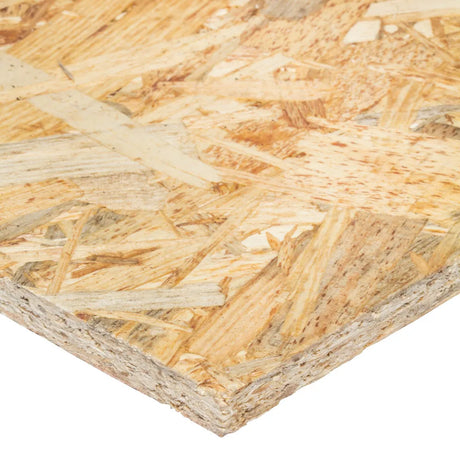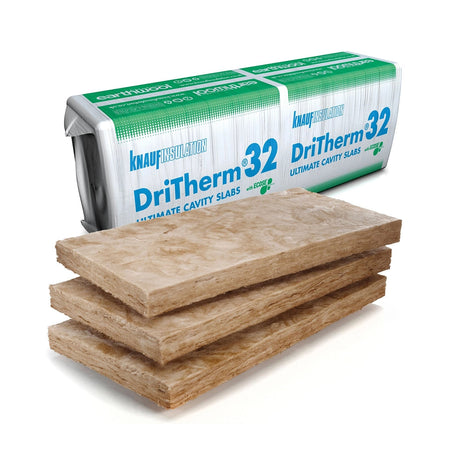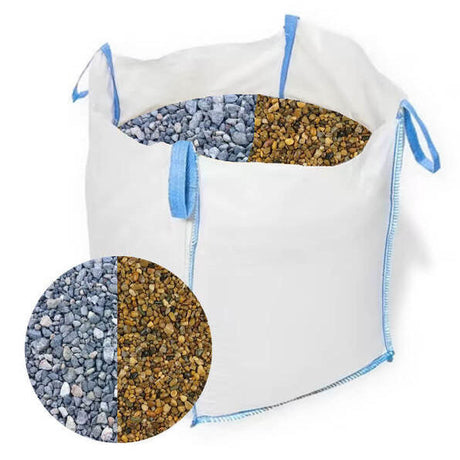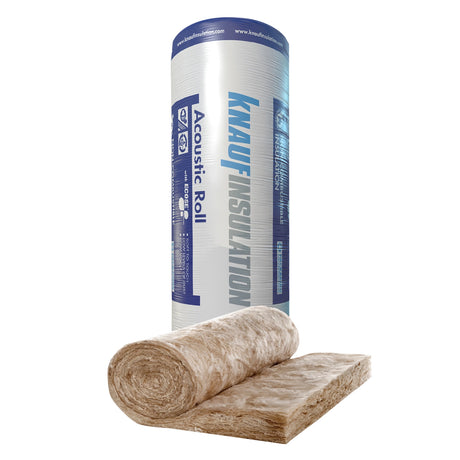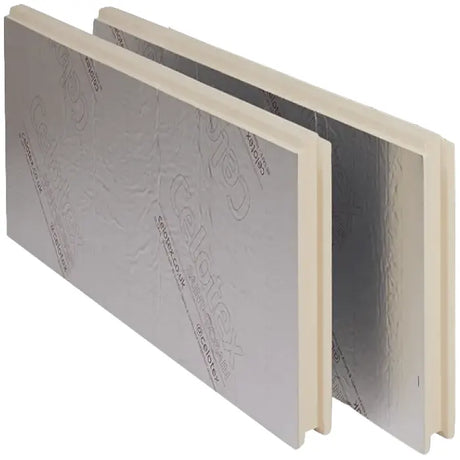A practical guide to the benefits of insulated plasterboard and how to install it cost-effectively
Introduction: The Smart Solution for Warmer Homes
Every winter, millions of UK homeowners face the same frustrating challenge: cold, draughty rooms that seem impossible to heat efficiently, no matter how high they turn the thermostat. If you're tired of watching your energy bills soar whilst still shivering in your own home, you're not alone. The good news is that there's a brilliantly simple solution that doesn't require extensive building work or a massive budget – insulated plasterboard.
This ingenious 2-in-1 product combines thermal insulation with a finished wall surface, revolutionising how we approach home insulation projects. Rather than the traditional method of installing separate insulation batts, vapour barriers, and plasterboard in multiple stages, insulated plasterboard streamlines the entire process into one straightforward installation. It's particularly perfect for DIY enthusiasts who want professional results without the complexity of multi-layer systems.
What makes this solution especially appealing for homeowners across the UK is its versatility in tackling common problems. Whether you're upgrading older solid walls that lack any insulation, transforming a cold spare bedroom into a comfortable space, or adding thermal performance to a garage conversion, insulated plasterboard delivers measurable improvements in both comfort and energy efficiency. The beauty lies in its simplicity – one product that saves time, reduces material costs, and creates a noticeably warmer living environment.
What Is Insulated Plasterboard? Understanding the Technology
Insulated plasterboard represents a sophisticated marriage of two essential building materials, engineered specifically to address the UK's unique housing challenges. The product consists of high-performance thermal insulation bonded directly to standard or fire-rated plasterboard, creating a composite panel that transforms how we approach internal wall improvements. Leading UK manufacturers like Kingspan, Celotex, and British Gypsum have perfected this technology, ensuring products that meet our demanding climate requirements whilst remaining accessible to DIY installers.
The manufacturing process involves precision bonding of insulation cores to gypsum-based boards under controlled factory conditions. This ensures consistent performance and eliminates the potential for gaps or thermal bridges that can occur with site-assembled systems. Available in thicknesses ranging from 22.5mm up to 72.5mm, these boards cater to various performance requirements and space constraints. The standard dimensions of 1200mm x 2400mm make them manageable for most DIY projects whilst providing efficient coverage.
Understanding the insulation core options helps you make the right choice for your specific needs and budget. PIR (polyisocyanurate) cores offer exceptional thermal performance, typically achieving U-values of 0.18 W/m²K or better, making them ideal for meeting Part L Building Regulations with minimal thickness. EPS (expanded polystyrene) cores provide excellent value for money, delivering solid thermal improvements at a more accessible price point, perfect for budget-conscious renovations. For premium applications where space is at an absolute premium, phenolic foam cores deliver outstanding thermal performance in the thinnest possible profile, though at a higher cost.
The Compelling Benefits of Choosing Insulated Plasterboard
Save Precious Time on Installation
Traditional insulation projects can drag on for days or even weeks, requiring multiple trades and countless trips to the builders' merchant. Insulated plasterboard transforms this frustrating process into a streamlined operation that most competent DIYers can complete in a weekend. By combining insulation and wall finishing into a single step, you eliminate the time-consuming process of measuring, cutting, and fitting separate insulation batts, followed by the additional work of installing vapour barriers and standard plasterboard.
This time-saving advantage becomes particularly valuable when you're working around family life or trying to minimise disruption to your home. Rather than having rooms out of action for extended periods whilst multiple layers are installed and finished, you can restore functionality quickly. The reduced installation time also means less mess, fewer deliveries, and crucially, less opportunity for weather to affect your project if you're working on external walls.
For those with limited DIY experience, the simplified process reduces the learning curve significantly. Instead of mastering multiple installation techniques, you focus on perfecting one straightforward method. This approach builds confidence and often leads to better results, as you're not juggling multiple unfamiliar processes simultaneously.
Dramatically Improve Thermal Efficiency
The thermal performance benefits of insulated plasterboard extend far beyond simple comfort improvements – they represent a fundamental transformation of your home's energy efficiency. These products are specifically designed to meet or exceed Part L Building Regulations, ensuring your investment delivers both immediate comfort and long-term value. The continuous insulation layer eliminates thermal bridging, a common problem with traditional stud wall constructions where timber frames create cold spots that compromise overall performance.
Real-world performance data from UK installations consistently shows heating cost reductions of 15-25% in rooms where insulated plasterboard has been properly installed. This improvement stems not just from reduced heat loss, but from the elimination of cold surfaces that make rooms feel uncomfortable even when air temperatures are adequate. When internal wall surfaces maintain temperatures closer to room temperature, you feel warmer at lower thermostat settings, creating a compounding effect on energy savings.
The technology proves particularly effective on solid wall properties, which represent a significant portion of UK housing stock. These buildings, often constructed before modern insulation standards, can be transformed from energy-hungry liabilities into comfortable, efficient homes. The continuous insulation layer addresses the thermal bridging issues inherent in solid wall construction, creating a comfortable environment that responds quickly to heating inputs.
Maximise Your Valuable Internal Space
In the UK's compact housing market, every square centimetre of internal space carries significant value. Traditional internal wall insulation systems often consume 100-150mm of room depth once stud walls, insulation, and finishes are accounted for. Insulated plasterboard achieves comparable thermal performance whilst using as little as 50-75mm of space, depending on your chosen specification. This space saving can make the difference between a cramped room and a comfortable living space.
The space efficiency becomes particularly crucial in period properties, where room proportions are often integral to the building's character. Maintaining ceiling heights and room proportions whilst achieving modern thermal standards requires careful material selection. Insulated plasterboard allows you to preserve the architectural integrity of your home whilst bringing it up to contemporary comfort standards.
Consider the practical implications in different room types: in a small bedroom, saving 75mm of wall thickness could provide space for fitted wardrobes or simply create a less cramped feeling. In a bathroom, the space saving might allow for a larger shower enclosure or additional storage. These seemingly modest space gains translate into genuine improvements in daily living comfort and property value.
Achieve Cost-Effective Renovation Results
Budget considerations drive many home improvement decisions, and insulated plasterboard delivers exceptional value through multiple mechanisms. The material cost comparison favours insulated boards when you consider the combined price of separate insulation, vapour barriers, and standard plasterboard. However, the real savings emerge from reduced labour requirements and simplified project management.
EPS-cored options provide an excellent entry point for budget-conscious homeowners, delivering substantial thermal improvements at costs comparable to basic internal insulation systems. These products typically achieve U-values of 0.25-0.30 W/m²K, representing a dramatic improvement over uninsulated solid walls whilst remaining accessible to modest renovation budgets. For those able to invest in PIR-cored products, the superior thermal performance often justifies the additional cost through enhanced energy savings and comfort levels.
The labour savings extend beyond simple installation time. Traditional multi-layer systems require coordination between different work stages, often involving multiple site visits and material deliveries. Insulated plasterboard projects can often be completed in a single mobilisation, reducing transport costs and minimising disruption. For DIY installers, the simplified process means fewer opportunities for costly mistakes and less requirement for specialist tools or skills.
Effectively Reduce Damp and Condensation Issues
Condensation problems plague many UK homes, particularly those with solid walls or inadequate insulation. Cold internal surfaces create conditions where water vapour condenses, leading to mould growth, decoration damage, and potential health issues. Insulated plasterboard addresses this problem at its source by maintaining internal surface temperatures above the dew point under normal living conditions.
The warm internal surfaces created by insulated plasterboard systems reduce relative humidity levels adjacent to walls, significantly decreasing condensation risk. This improvement proves particularly valuable in rooms prone to moisture generation, such as kitchens, bathrooms, and bedrooms. Many products incorporate vapour control layers that help manage moisture movement through the wall assembly, providing additional protection against interstitial condensation.
Understanding condensation control helps you choose the right product specification for your specific situation. In rooms with high moisture generation, selecting boards with integrated vapour barriers provides additional protection. For most living spaces, standard insulated plasterboard provides adequate moisture management whilst allowing the wall assembly to breathe naturally, preventing trapped moisture issues that can occur with overly vapour-tight constructions.
Identifying the Best Applications for Insulated Plasterboard
Transforming External Solid Walls in Period Properties
External solid walls represent the greatest opportunity for thermal improvement in many UK homes, particularly those constructed before 1930. These walls, typically 225mm of solid brick or stone, offer virtually no thermal resistance and create uncomfortable living conditions whilst consuming enormous amounts of heating energy. Insulated plasterboard provides a practical solution that doesn't compromise the external appearance of period properties whilst delivering modern thermal performance.
The application proves particularly effective in Victorian and Edwardian terraced houses, where external wall insulation may be restricted by planning considerations or technical challenges. Internal application of insulated plasterboard can transform these properties from difficult-to-heat energy drains into comfortable, efficient homes. The key lies in selecting appropriate thicknesses that balance thermal performance with space constraints, typically ranging from 50mm to 100mm depending on the specific circumstances.
Success with solid wall applications requires careful attention to thermal bridging at junctions and around openings. However, the continuous insulation layer provided by insulated plasterboard significantly reduces thermal bridging compared to timber frame alternatives, making it an excellent choice for achieving compliance with current building standards whilst maintaining practical installation requirements for DIY projects.
Addressing Cold Bedrooms and North-Facing Rooms
Cold bedrooms represent a particular comfort challenge in UK homes, affecting sleep quality and creating conditions where condensation and mould can develop. North-facing rooms, which receive minimal direct solar gain throughout the year, often remain uncomfortably cool despite adequate heating provision. Insulated plasterboard installation in these spaces can create dramatic improvements in comfort levels whilst reducing heating requirements.
The rapid temperature response of rooms fitted with insulated plasterboard makes them particularly suitable for intermittent heating patterns common in bedrooms. Rather than requiring hours to reach comfortable temperatures, properly insulated spaces respond quickly to heating inputs and maintain stable temperatures with minimal energy input. This responsiveness proves particularly valuable in children's bedrooms, where maintaining consistent temperatures supports better sleep patterns and reduces illness risks.
Guest bedrooms and spare rooms often suffer from being heated infrequently, creating cold, unwelcoming spaces when needed. Insulated plasterboard installation transforms these rooms into comfortable spaces that warm quickly when required, making them genuinely usable rather than merely functional. The investment in thermal improvement often proves worthwhile when considered against the improved utility and potential rental value of properly conditioned spare accommodation.
Optimising Garage Conversions and Garden Rooms
Garage conversions represent excellent value opportunities for creating additional living space, but their construction often presents thermal challenges. Originally designed as unheated storage spaces, garages typically feature minimal insulation and construction details unsuited to habitable accommodation. Insulated plasterboard provides an efficient solution for bringing these spaces up to living standards whilst maintaining maximum usable floor area.
The thin profile of insulated plasterboard systems proves particularly valuable in garage conversions, where headroom may be limited and every centimetre of space contributes to the success of the conversion. Traditional stud wall and insulation systems might compromise the proportions of the converted space, whilst insulated plasterboard maintains generous room dimensions whilst delivering excellent thermal performance.
Garden rooms and outbuildings benefit similarly from insulated plasterboard application, particularly where these structures serve as home offices or hobby spaces requiring comfortable conditions year-round. The ease of installation makes these projects achievable for DIY enthusiasts, whilst the thermal performance ensures the spaces remain usable throughout the UK's variable climate conditions.
Improving Ceilings Below Unheated Spaces
Ceilings below unheated loft spaces often represent significant sources of heat loss in UK homes, particularly in older properties where loft insulation may be inadequate or have settled over time. Applying insulated plasterboard to these ceilings provides an effective alternative to accessing loft spaces for insulation upgrades, particularly where access is difficult or storage requirements limit insulation thickness.
This application proves particularly valuable in flats and apartments where loft access may be restricted or where multiple occupancies complicate insulation upgrades. Insulated plasterboard can be applied from below, avoiding disruption to neighbouring properties whilst delivering significant thermal improvements. The installation process can often be completed room by room, allowing occupancy to continue throughout the project.
Upper floor rooms in houses often benefit from ceiling application of insulated plasterboard, particularly where dormer windows or complex roof geometries create thermal bridging issues. The continuous insulation layer addresses these problems whilst providing a clean, finished ceiling surface that enhances the room's appearance alongside its thermal performance.
Professional Installation Tips for DIY Success
Preparation: The Foundation of Success
Proper preparation distinguishes successful DIY projects from frustrating experiences that require professional remediation. Begin your insulated plasterboard installation by thoroughly assessing wall conditions, checking for dampness, loose masonry, or structural issues that could compromise the installation. Walls must be clean, dry, and structurally sound before proceeding. Any existing wallpaper, loose paint, or debris should be completely removed to ensure proper adhesion of dot-and-dab compound or mechanical fixings.
Surface preparation extends beyond simple cleaning to include addressing any irregularities that could affect board placement. Use a long straight edge to identify high and low spots, marking areas that require attention. Minor irregularities can be addressed during installation, but significant variations may require remedial work before proceeding. Check electrical and plumbing services, ensuring adequate provision for relocating switches, sockets, and other fixtures that will be affected by the additional wall thickness.
Environmental conditions during installation significantly affect success rates. Avoid installation during periods of high humidity or extreme temperatures, as these conditions can affect adhesive performance and board handling characteristics. Ensure adequate ventilation during and after installation to facilitate proper curing of adhesives and prevent moisture accumulation. Plan your material delivery to minimise storage time, particularly during winter months when damp conditions can affect board condition.
Fixing Methods: Choosing the Right Approach
The choice between dot-and-dab adhesive application and mechanical fixing depends on wall conditions, board thickness, and performance requirements. Dot-and-dab installation using gypsum-based adhesives provides excellent results on sound masonry walls, offering the advantage of accommodating minor surface irregularities whilst creating a continuous fix. Apply adhesive in consistent dabs approximately 50mm diameter at 400mm centres, with continuous beads around board perimeters to ensure adequate support and air sealing.
Mechanical fixing becomes necessary on walls with questionable integrity or where enhanced security is required. Use appropriate fixings for your wall construction – typically 75mm screws into masonry walls or 100mm screws into timber frame construction. Ensure fixings penetrate at least 25mm into the substrate beyond the board thickness. Pre-drill fixing positions to prevent board damage, countersinking slightly to allow for finishing compound application.
Hybrid fixing methods, combining adhesive dabs with strategic mechanical fixings, often provide optimal results, particularly on challenging walls or with thicker boards. This approach provides immediate support during installation whilst ensuring long-term security. Pay particular attention to fixing patterns around openings and at board edges, where additional support prevents cracking and ensures professional-looking joints.
Finishing Techniques for Professional Results
Joint treatment requires the same attention to detail as standard plasterboard installation, but the thermal performance of the substrate demands careful attention to air sealing. Apply jointing compound to all board joints, using paper tape to reinforce butt joints and prevent cracking. Feather compound edges to create invisible joints, applying multiple thin coats rather than attempting to achieve perfection in a single application.
Foil tape application at board edges becomes critical when installing insulated plasterboard on external walls, as this detail prevents thermal bridging and maintains the continuity of vapour control layers where present. Apply tape carefully to ensure complete adhesion, pressing out air bubbles that could compromise performance. This detail often distinguishes professional installations from amateur attempts and significantly affects long-term performance.
Corner bead installation requires particular care with insulated plasterboard, as the additional thickness can affect standard corner profiles. Choose appropriate bead depths to accommodate the increased wall thickness, ensuring clean, professional-looking corners that enhance the finished appearance. Internal corners may require adjustment of skirting board and architrave details to accommodate the increased wall thickness whilst maintaining proportion and visual appeal.
Budget-Friendly Product Recommendations from DIY Building Supplies
Exceptional Value EPS-Cored Solutions
Our carefully curated selection of EPS-cored insulated plasterboard delivers outstanding thermal improvements at prices that make upgrading accessible to every homeowner. Kingspan Kooltherm K118 represents exceptional value in this category, combining 12.5mm plasterboard with 25mm EPS insulation to achieve U-values of 0.35 W/m²K in a 37.5mm overall thickness. This specification proves ideal for solid wall improvements where space constraints limit options, providing substantial thermal improvement whilst remaining within modest renovation budgets.
For projects requiring enhanced thermal performance, British Gypsum ThermaLine Plus offers EPS cores up to 50mm thickness, achieving U-values approaching 0.25 W/m²K whilst maintaining excellent value credentials. Available in standard 1200mm x 2400mm sheets, these products provide efficient coverage with minimal waste, important considerations for budget-conscious projects. The tapered edge detail ensures professional joint finishes, whilst the white paper face accepts standard decoration systems without additional preparation.
Bulk purchasing opportunities through DIY Building Supplies provide additional savings for larger projects. Our pallet pricing on EPS-cored products often delivers savings of 15-20% compared to individual sheet purchases, making whole-house upgrades genuinely affordable. Consider combining purchases with other project materials to maximise delivery efficiency and take advantage of our free delivery thresholds for qualifying orders.
High-Performance PIR Options for Enhanced Results
For those seeking maximum thermal performance within reasonable budgets, our PIR-cored selection delivers exceptional results that often exceed Building Regulation requirements whilst providing excellent long-term value. Celotex PL4000 range offers PIR cores from 25mm to 100mm thickness, with the 50mm variant achieving impressive U-values of 0.18 W/m²K in just 62.5mm overall thickness. This performance level ensures comfortable rooms with rapid heating response and minimal energy consumption.
Kingspan Kooltherm K118 PIR variants provide premium performance characteristics, including enhanced fire resistance and low smoke emission properties that make them suitable for escape route applications. The superior thermal conductivity of PIR insulation means you achieve better performance in thinner profiles, maximising internal space whilst delivering outstanding comfort levels. These products prove particularly cost-effective in high-value rooms where the combination of space saving and thermal performance justifies the additional investment.
Our technical team provides comprehensive U-value calculations and specification advice to ensure you select the optimum thickness for your specific requirements. This service helps avoid over-specification whilst ensuring compliance with Building Regulations, maximising the value of your investment. We frequently identify opportunities to achieve target performance with thinner, more cost-effective solutions than initially anticipated.
Complete System Solutions and Accessories
DIY Building Supplies stocks comprehensive accessory ranges to ensure your insulated plasterboard installation achieves professional standards throughout. Our selection includes specialist adhesives formulated specifically for insulated board applications, providing enhanced grab and extended working time compared to standard plasterboard compounds. These products prove particularly valuable for DIY installers, offering greater tolerance for installation variations whilst ensuring reliable long-term performance.
Foil tape selection includes products from leading manufacturers like Pro Clima and Tyvek, ensuring vapour barrier continuity where required. These accessories often represent a small proportion of total project costs but significantly impact performance outcomes. Our technical team provides detailed guidance on accessory selection, ensuring compatibility between different system components whilst avoiding unnecessary expense on over-specified products.
Finishing accessories include corner beads, joint compounds, and primer systems specifically designed for use with insulated plasterboard substrates. These products ensure professional appearance whilst accommodating the specific characteristics of thermal boards. Our package deals often include appropriate accessories with board purchases, simplifying procurement whilst ensuring system compatibility.
Conclusion: Your Path to a Warmer, More Efficient Home
Insulated plasterboard represents a transformative solution for UK homeowners seeking to improve comfort, reduce energy bills, and add value to their properties without the complexity and expense of major construction work. This intelligent 2-in-1 technology eliminates the traditional barriers that have prevented many people from addressing thermal performance issues, making significant improvements accessible to competent DIY enthusiasts across the country.
The compelling combination of time savings, space efficiency, and thermal performance makes insulated plasterboard particularly suitable for the UK's diverse housing stock. Whether you're tackling a Victorian terrace with solid walls, converting a garage into usable space, or simply trying to make a cold bedroom more comfortable, these products deliver measurable improvements that you'll notice immediately and appreciate for years to come. The simplified installation process means you can achieve professional results without the complexity of multi-layer systems, building confidence whilst creating genuinely comfortable living spaces.
At DIY Building Supplies, we understand that successful home improvement projects depend on more than just quality materials – they require expert guidance, competitive pricing, and comprehensive support throughout your project journey. Our carefully curated selection includes options for every budget and performance requirement, backed by technical expertise that ensures you select the right solution for your specific needs. The investment in insulated plasterboard pays dividends through reduced heating costs, improved comfort, and enhanced property value, making it one of the most cost-effective improvements you can make to your home.
Ready to transform your home's thermal performance? Discover our comprehensive range of Insulated Plasterboard solutions, complete with expert specification advice and competitive pricing. Visit DIYBuildingSupplies.co.uk today and take the first step towards a warmer, more efficient home. Our technical team is standing by to help you select the perfect solution for your project, ensuring professional results that deliver lasting comfort and value.



